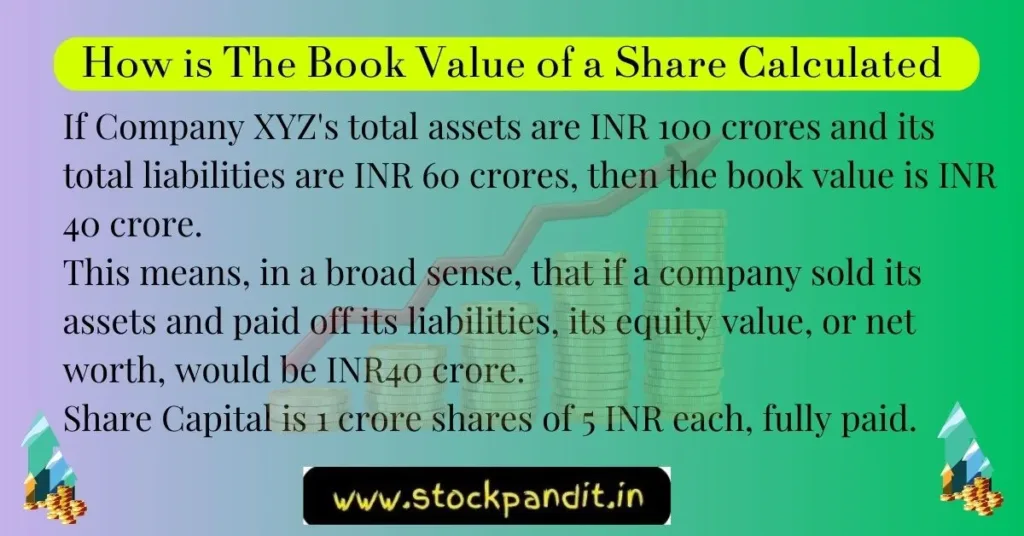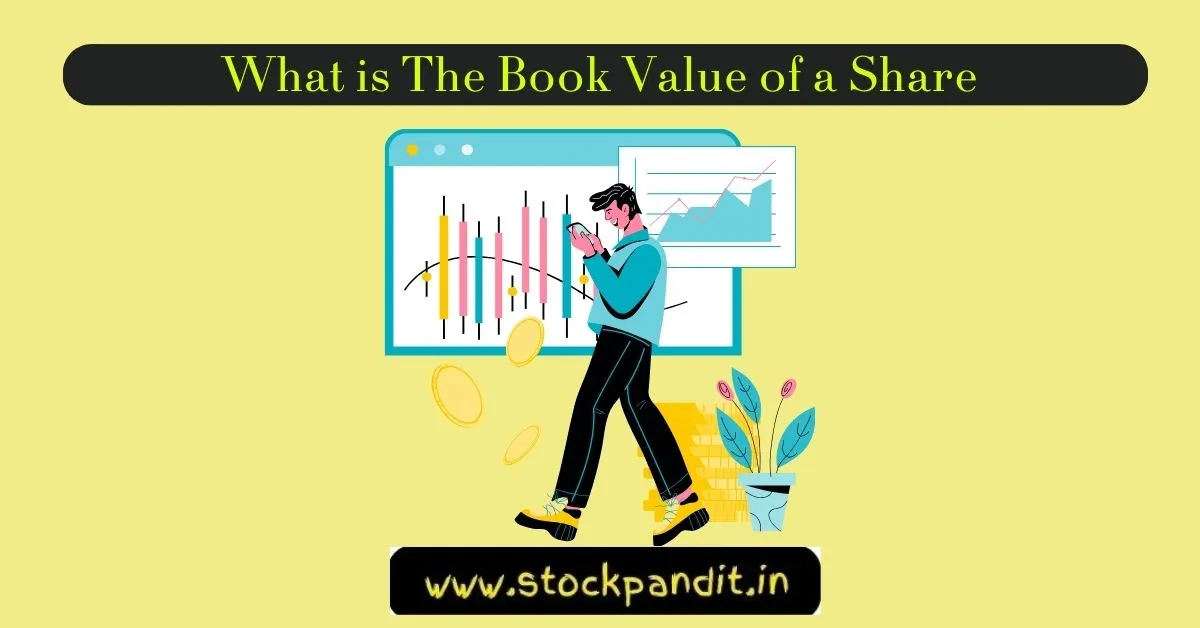The concept of book value is very important if you want to discover the hidden assets in a company. In tis article we discussed in details What is The Book Value of a Share.
You can be an investor legend like Warren Uncle. You have to search for stocks with a higher value than the price.
We can also say that successful investors are always looking for undervalued stock.
The book value is the accounting value of an equity share that has been recorded in the accounts of the business.
Some investors claim that the book value is simply the number written in the company’s books. These investors are also right.
Other terms for net worth include shareholder’s equity and total equity.
Accounting Standards require that historical data be recorded.
Imagine that a company purchased land for their factory in 2000 at rs.1 crore. Imagine how much land will be worth in 2024.
The Book Value of Shares represents the liquidation value of all assets of the company, less any claims from debt holders.
Calculate the value of the property in 2000.
You May Also Like: What is PE Ratio Today
There are many things you will learn.
The Book Value has been getting a lot more attention in recent years, perhaps because it’s so easy to find. This number is reported everywhere.
Per Share Book Value
Now that you know the net value of the business, it is time to divide the net value of the business into each share.
You May Also Like: What is Average Trade Price in Stock Market ?
You can express mathematically:
Book Value per Share = (Total Share Equities – Preferred equity)/Number Shares Outstanding.
This example will be simplified to make it easier for you to understand.
Assume the Structure of the Balance Sheet of Mittals Ltd. where they have Rs.10 Crores on the assets side and Rs.7 Crores on liabilities(excluding) Equity.
For some reason, they want to close this business.
They owe Rs.7 Crores and must pay it first. Then they can use the Rs.10 Crores in assets. Later, they will have Rs.3 Crores that belongs to the shareholders.
The number of shares outstanding is now 1 Crore.
The book value per share is Rs.3 using the same formula we discussed earlier.
How To Know Book Value of a Share
The book value of a share = the net worth/number of shares
40 crore/ 1 billion
The equivalent of INR 40
The book value of a share is 40 INR per share.

How to Use Book Value as a Valuation Metric
The book value per share can be used by investors to find undervalued firms.
The value of the share is proportional to its market value.
If a company’s Book Value per Share is greater than its current stock price, then the stock will be considered overvalued. Investors can view it as a bargain.
If the book value of a company per share is lower than the current stock price, then it is considered that the stock is overvalued.
It is important to note that this is not the only way to value stocks. Research other topics as well.
When the Book Value per Share of a company increases, it is likely that the stock will be considered more valuable and its price should also rise.
The price of the market should increase.
A negative BPS indicates that the total liabilities of a company exceed its total assets.
Why Is Book Value Important ?
People today invest on the basis that if an equity’s book price is Rs. 20 and it sells at Rs.10 they get a 50% discount. The problem is that book value does not always reflect the actual value of the company.
Book value is not the best way to go, because machines and equipment are depreciated on the balance sheet.
Take the example of a garment factory that has too many items and is unable to move them. No one wants it. It is not available at the book value.
Both assets and liabilities must be carefully examined. Sometimes, overpriced assets may cancel out actual liabilities. Book value should be based on the assets.
What Are the Benefits of Using Final Words on Book Value ?
The book value per share is a disadvantage because the coin also has two sides. It excludes intangible factors like Goodwill and Intellectual Property.
We hope we have given you the best information possible about the book price.
Tell us what you think of the book value. Please leave us a comment. We will reply to you.
FAQs:
What is the best book value per share to buy ?
Value investors have traditionally favored values below 1.0, which indicate that a stock is undervalued. Some value investors will use a P/B ratio of less than 3.0, which is less stringent.
Does higher book value mean better ?
Book value is a good way to determine a company’s worth. When the book value is greater than its market price per share, it may indicate that a stock is undervalued. If the book price per share is less than its market value, this can indicate a stock that’s overpriced or overvalued.
What is the book value of a share ?
Book Value per Share (BVPS)
To calculate BVPS you multiply the total shareholder’s equity by all outstanding common shares. If a company has $21 million of shareholders’ equity, and 2 million common shares outstanding, then its book value per stock would be $10.50.
How is the book value calculated ?
Calculating book value involves adding up all assets and subtracting all liabilities. Liabilities include current liabilities, fixed assets and current assets.
What book values are good ?
What is the best price to book value ratio? Value investors prefer values lower than 1.0. This suggests an undervalued share. Value investors may often use equities that have a P/B ratio less than 3.0, which is a less stringent value.
How to calculate the book value of shares ?
The book value per share is calculated by dividing the equity available to the common shareholders by the number of outstanding shares. This number is used to calculate a company’s equity and book value per share.
What are the benefits of book value ?
In terms of valuation, book value is important because it gives a true and accurate representation of the worth of a business. This figure is calculated using historical data about the company and is not usually subjective. Investors and analysts can get an idea of a company’s value.






